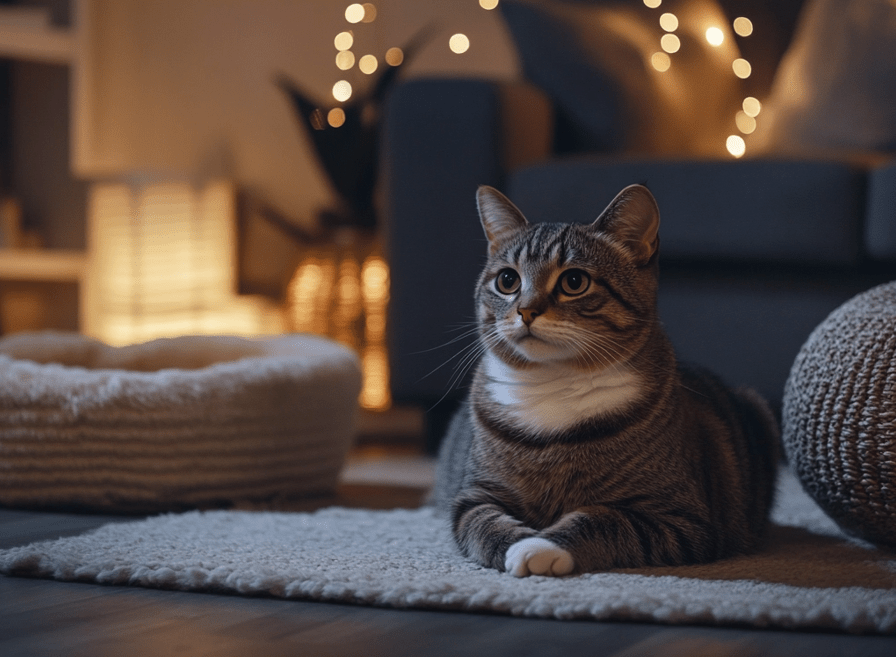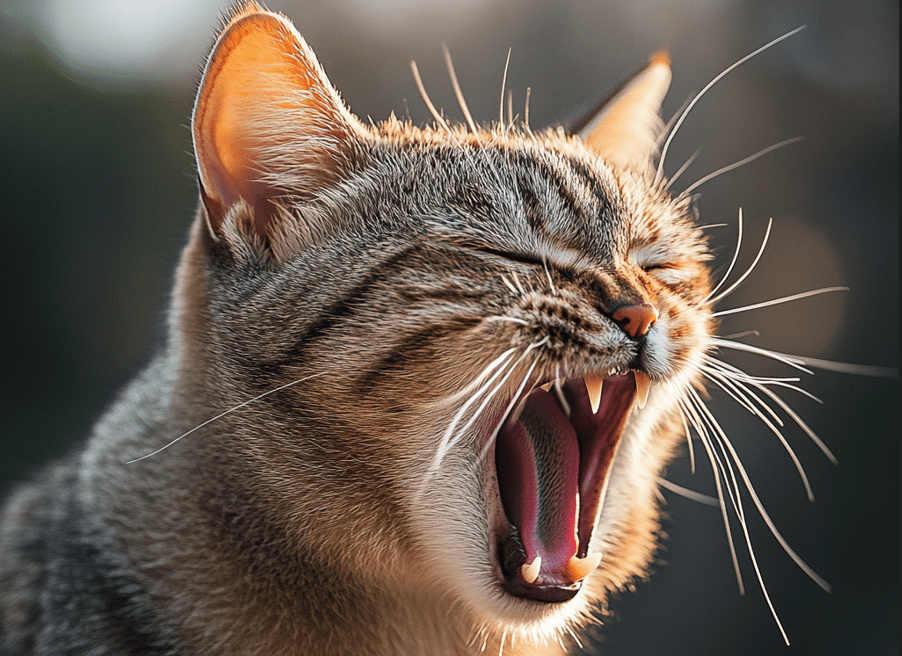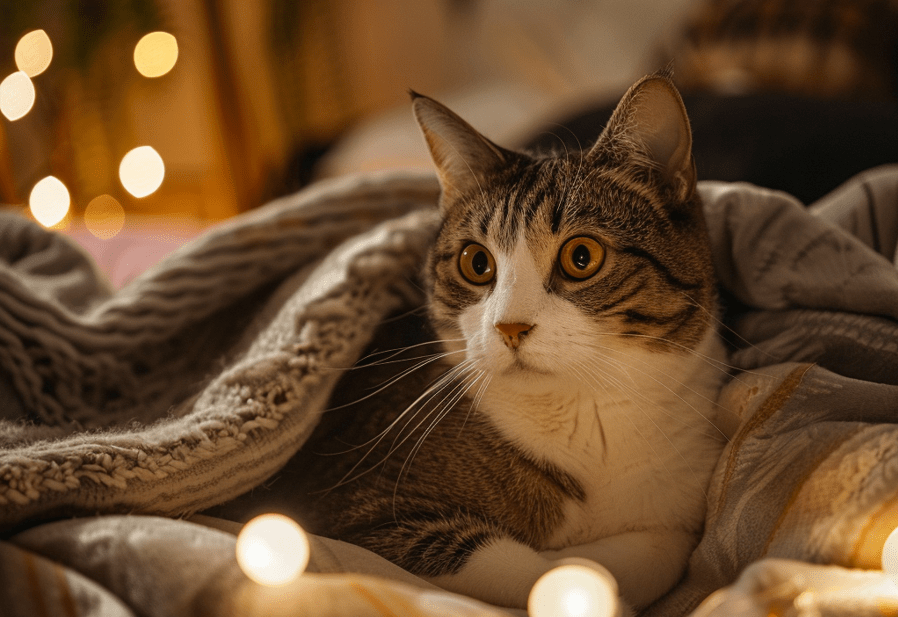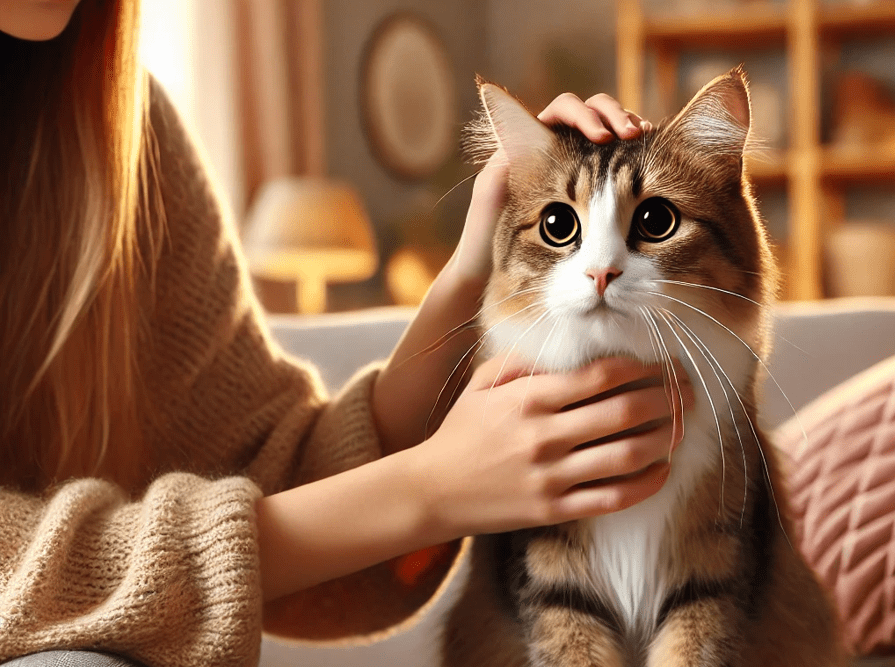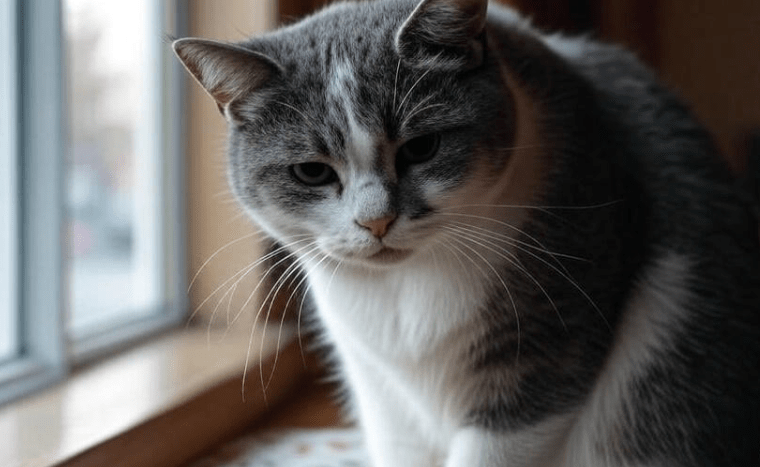
Separation anxiety is a true condition that affects people, dogs, and even cats. While separation anxiety in dogs is widely known, many people are unaware that cats can also experience it. In this article, we will discuss separation anxiety in cats, signs of separation anxiety in kitties, why it can occur, and how to treat and manage separation anxiety. Separation anxiety in cats can occur when their owners leave. Some symptoms of separation anxiety in cats include vocalizing, hiding, excessive grooming, eliminating outside the litter box, and destruction. Owners can supply interactive toys and treats to help cats with separation anxiety.
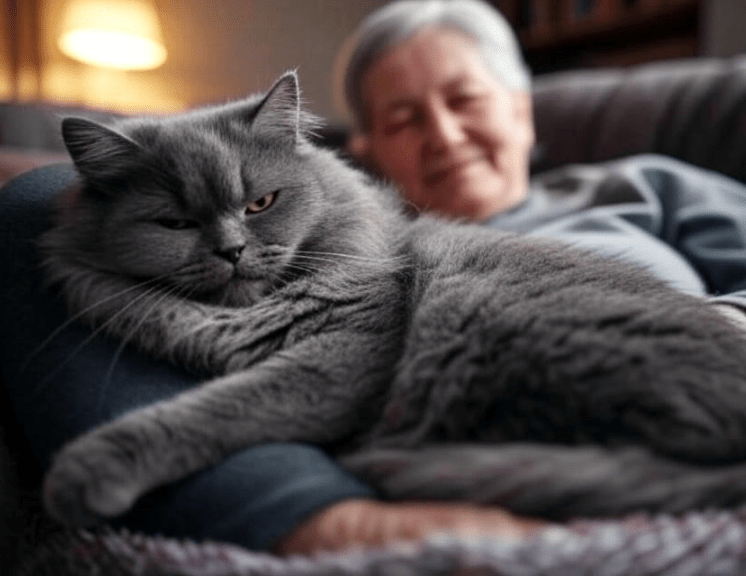
Separation anxiety can be a major issue, but with some knowledge and patience, you can teach your feline friend to feel more secure and calm when you’re not home. It is important to recognize that cats are not incapable of forming powerful emotional attachments to their owners. Cats often express their affection through purring, rubbing, or kneading, a behavior that some may mistake for coldness. They can only develop an extreme human dependency that can lead to despair when they are left alone, though. Playtime and feeding times form the bond at an early age, and positive associations reinforce it.
On the other hand, cats secrete oxytocin, the so-called love hormone, when spending time with their owners, just like a human does. This hormonal response is a testament to the depth of the connection between cats and their humans, but it also makes clear the potential for emotional trauma in the event of a separation.
Factors that Lead to Cat Separation Anxiety
Separation anxiety takes place when felines develop an undue attachment to their humans and show distress when the two are apart or not together. It is believed to be precipitated by changes to the cat’s environment, including new people or pets, a move to a new home, a change in routine, or an owner’s absence for long periods. Other possible reasons include inadequate socialization, a hormonal shift, boredom, and negative past experiences. For example, poorly socialized cats are prone to separation anxiety when left alone. Living indoors and having just one pet per household is also a contributing factor.
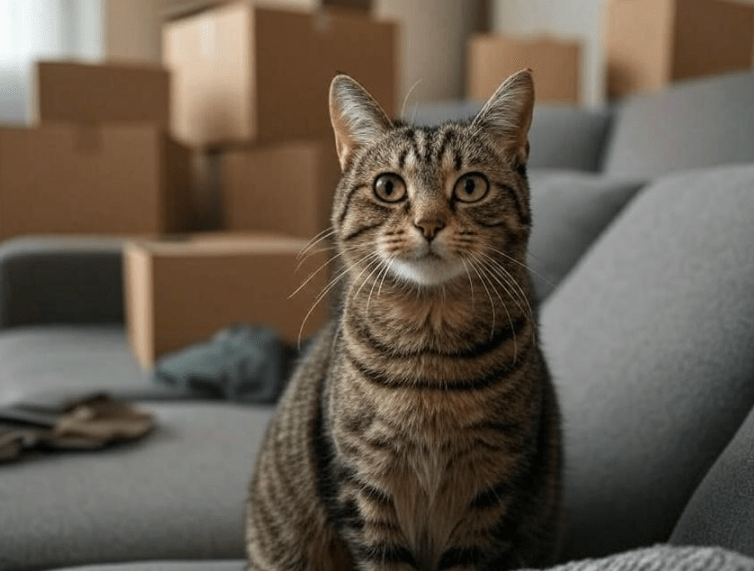
Hormonal changes in an indoor cat can also cause a shift in behavior that could lead to separation anxiety. Another giant factor is a lack of mental and physical stimulation—our cats need some interaction and playtime with you to stay well and happy! Environmental or schedule changes are also triggers, particularly if there are big shifts in his household dynamics, such as a change of address or a new work schedule for his humans. Long-term separation anxiety in felines can also stem from past negative experiences, such as punishment or neglect when left alone.
Symptoms of Separation Anxiety
Detecting signs of separation anxiety in cats may not be easy; you have to monitor for signs of behavioral change. Common signs of stress include sudden vocalizations such as meowing, crying, or howling; excessive grooming; aggression towards other pets or people; urinating or defecating outside the litter box; appearing overly needy or following their owners around; loss of appetite; and unusual pacing or restlessness. Kittens may exhibit clinginess, following their caregivers everywhere to avoid separation and frequently seeking attention. They could demonstrate lethargy or hide when the owner is away. Some cats may also experience gastrointestinal issues; some may try to escape.
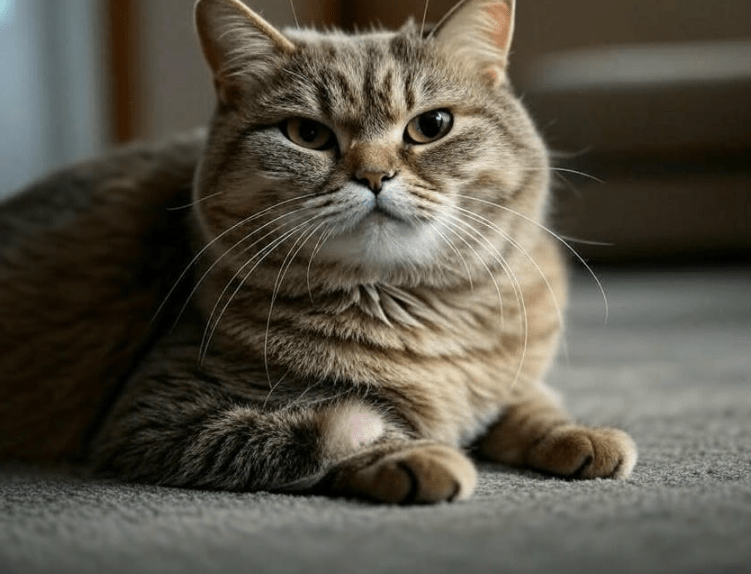
Some people may interpret these subtle behaviors as spite or boredom. But it becomes more difficult to tackle the “real” anxiety behind it if you start to notice these signs before it’s too late. Of course, a few of these symptoms might signal medical problems, so checking with a vet to rule out any health conditions is key. It is important to realize that cats are masters at hiding illness and stress, so their distress may not be immediately apparent until they display overt behaviors such as vocalization or house soiling.
A cat with separation anxiety may lose its appetite or eat too fast and vomit. When stressed, they self-groom more than usual, causing alopecia or skin irritation. Many dogs respond to the stress of separation with destructive behaviors like scratching furniture, knocking over items, and chewing clothes.
Predisposing Factors for Cats in Developing Separation Anxiety

There are some factors that may trigger separation anxiety in cats. Genetics, lifestyle, and environment are significant factors. When they become adults, for example, orphaned cats raised in a bottle-fed environment may suffer from separation anxiety. The odds of it happening are also higher in indoor environments with only one adult caregiver. Female cats may be more likely than males to develop separation anxiety after extensive socialization, perhaps due to hormonal differences or because they take on more responsibility for a household.
Particular breeds, including Siamese, Burmese, and Tonkinese, are determined to be more prone to separation anxiety. Their gentle and loving disposition could be a contributing factor to their tendency to easily attach to their owners. These cats sometimes depend entirely on their human caregivers for play and emotional support as the only pet in the home.
Furthermore, cats can be very sensitive to changes in their routine. Moving to a new home, alterations in the family schedule, or prolonged absence from an owner can trigger anxiety in cats. Feral cats and those who have not been properly socialized or stimulated will develop anxiety disorders, including separation anxiety. As a result, one is able to identify these predisposing factors to allow pet owners to arrange prevention for their cats to maintain their emotional stability.
Separation Anxiety Treatment Options
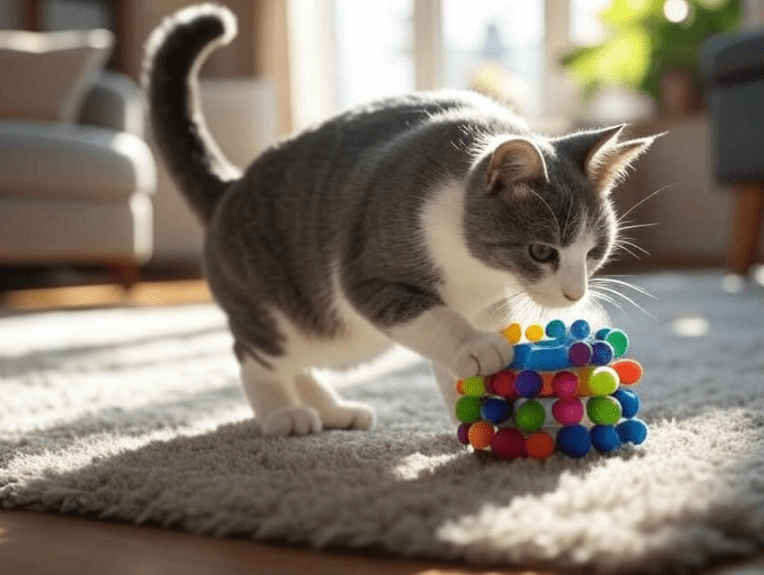
Treatment for separation anxiety in cats includes calming techniques, environmental enrichment, and behavior modification. If you are a pet owner, it is crucial to maintain patience and consistency when managing this condition, and you should consider consulting a veterinarian or professional animal behaviorist when necessary. It may help, for example, to check with a veterinarian to see whether there’s an underlying medical issue at play that’s causing the anxiety. Creating a safe and comfortable space for your feline is critical, including many places to hide and play.
Exercise can help curtail stress and anxiety while building a daily routine with your cat that strengthens the bond and also provides your kitty with security. Positive reinforcement via treats and rewards, routine, and calming supplements or medications, if necessary, can also go a long way. To help your cat adjust to your absence over time, you could gradually introduce your cat to the source of their anxiety. As for the extreme cases, outside assistance and medicine are required to control the anxiety properly.
Environmental enrichment is the term for all the stimulating activities and toys we provide when we leave the house so our cat can still feel entertained. Items such as food puzzles, interactive toys, and scratching posts are examples of environmental enrichment. Redirecting cats’ attention and energy into positive behaviors can help them cope better.
Separation anxiety at home—tips for managing
To reduce separation anxiety in the home, owners should aim to keep their departures and returns low-key. Taking leave of your cat without drama or fanfare can ease the transition for the cat when you leave. Providing distractions for your cat when you’re not home, such as omitting toys or treat-filled puzzles, can help keep them mentally and physically stimulated. For this, less pampering and leading to independent activities can make a more independent cat than bothering the owner.
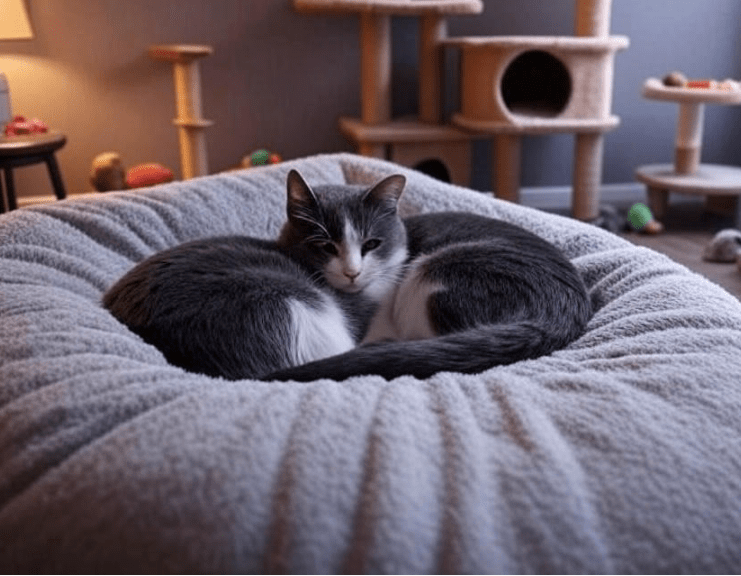
If you’re going away, you can ask family members to come over and keep the cat company to make sharing attention more equitable so the cat will not feel too dependent on one person. Pheromone diffusers can help, as well as soft, calming music or white noise. If the symptoms are persistent, I would recommend talking to a veterinarian who will be able to offer guidance and support suited for the specific needs of the cat.
If you need a companion, do not get another pet, as the addition may disrupt the cat’s environment and is not likely to remedy the underlying anxiety brought about by the owner’s absence. It’s a waste of time to punish the cat for behaviors that stem from separation anxiety, and doing so can exacerbate the problem. The objective is to provide a peaceful, safe setting that encourages the cat’s emotional health.
Overall Management and Prevention
We need to conduct a thorough medical examination to rule out any underlying medical issues that could be contributing to the anxiety. If the cat’s level of anxiety is so high that they cannot avail themselves of behavioral solutions, medication may be an option.

Environmental enrichment is a vital aspect of preventing separation anxiety. This entails providing ample toys, scratching posts, and play spaces to foster the cat’s natural behaviors. Regular wellness checks with a veterinarian are crucial to detect and treat any emerging issues.
To avoid separation anxiety, the key is to have a balanced relationship with them, keeping them mentally and physically stimulated. Identifying symptoms of separation anxiety and getting help early is crucial to avoid further development of anxiety disorders. If you use video surveillance to monitor your cat’s behavior in your absence, it will help you identify the things that can stress your feline companion.
It is also critical to provide your cat with some space to retreat to when they are feeling stressed. The result may be a room or a designated space with familiar scents and cozy bedding. Your goal is to create calm and security and eliminate anxiety when left alone.

